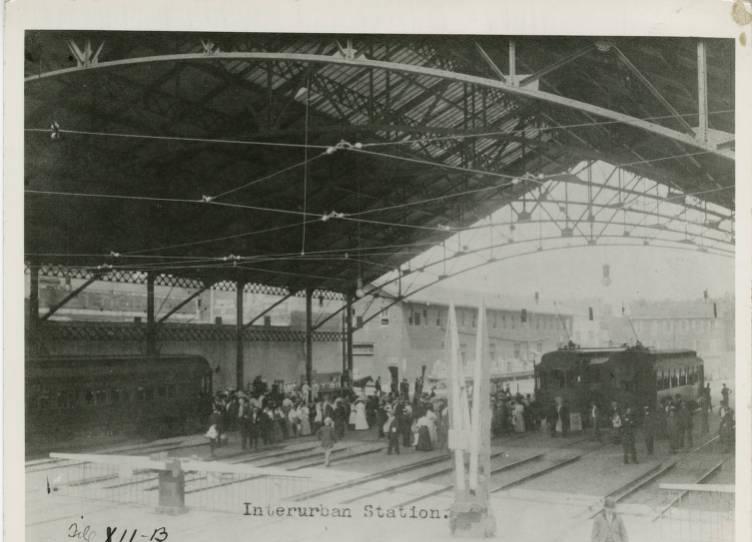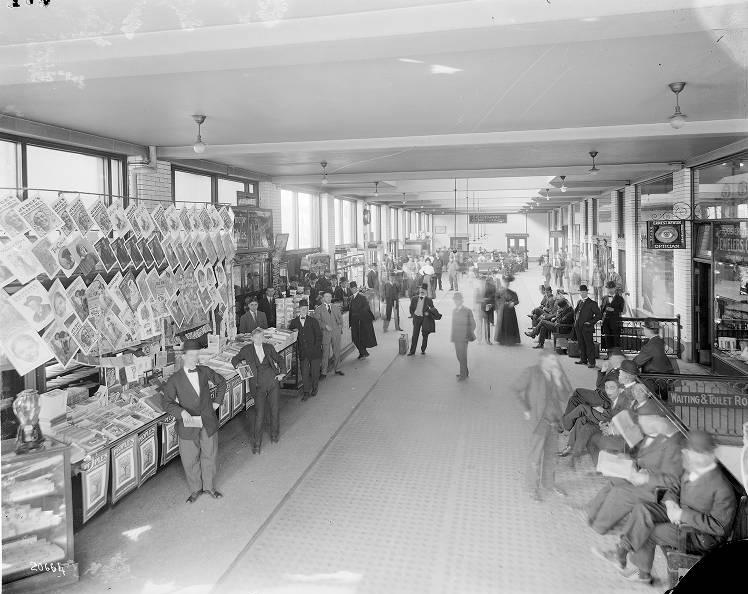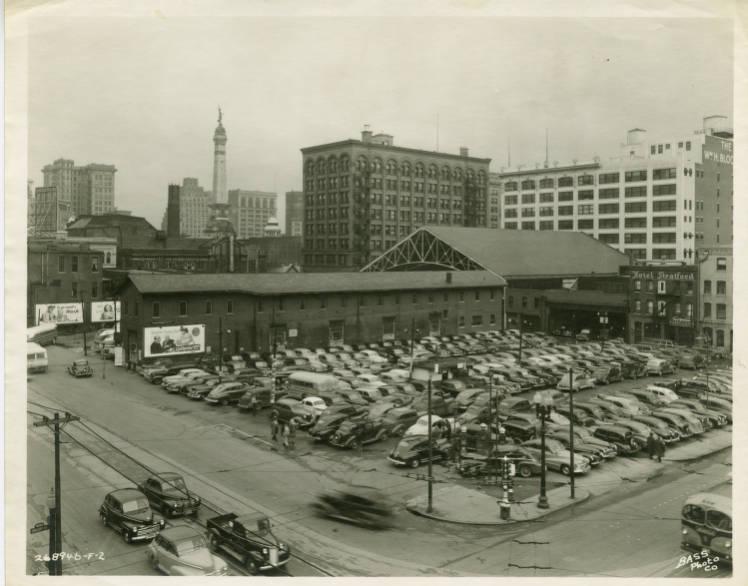Hub of the statewide interurban (electric railway) system. When the Indianapolis Traction Terminal opened in 1904 it was reputed to be the largest traction terminal in the world.

The introduction of in the Hoosier capital at the beginning of the 20th century created serious traffic congestion due to loading and unloading in the city streets. Since each line had its own station, traffic delays occurred in three different blocks by 1901. With six additional lines under construction, corrective action was necessary. Seven interurban companies signed an agreement by early 1902 for use of the city street railway tracks and the construction of a joint interurban terminal.
On August 4, 1902, the Indianapolis Traction and Terminal Company was incorporated to operate the city railway and new terminal. In December the company bought half of a block just east of the State House (the 100 block of West Market Street). The existing buildings, including the famous , which had housed the giant mural “The Battle of Atlanta,” were razed. Celebrated Chicago architect, Daniel H. Burnham designed the building. Terminal construction began in July 1903. The station was completed in September 1904.

The terminal complex contained an office building and a train shed. The nine-story building had 250 offices (most of the traction companies located there), nine storerooms on the first floor, and a ticket office and waiting room. West of the building was the giant, nine-track train shed. The interurban cars entered and left the shed via access tracks from Ohio and Market streets. City entered the shed only on rare special occasions.
On July 1, 1905, the Indianapolis Joint Ticket Agency, the first of its kind in the country, opened in the terminal. An immediate success, the agency offered tickets to all points on interurban lines in Indiana, Ohio, Kentucky, and Michigan that could be reached from Indianapolis. The freight terminal, located in the northwest quarter of the block, included three large brick sheds served by nine tracks and four loading areas.

Freight traffic saw a spectacular increase, from a dozen cars per day in 1905 to an average of 71 per day in 1916. The small and crowded freight area at the terminal could not properly handle this traffic, and in 1918 the Terre Haute, Indianapolis, and Eastern line (THI&E) moved to a new, much larger terminal of its own on Kentucky Avenue. This new freight terminal relieved the original station’s problems to some extent, and in 1924 the remaining lines also moved to new facilities adjoining those of the THI&E.
The old buildings became an express terminal, and later a coach storage yard. In the late 1930s, as interurbans began to be abandoned, several of the station’s tracks were paved over for bus service. Early in 1941, the entire shed floor was paved for exclusive bus operation, and the sole remaining electric line, Interstate’s run from Indianapolis to Seymour, turned on a wye (a triangle of railroad track used for turning trains) north of the shed.

In 1966, Greyhound moved to a new station and parking garage just north of the Traction Terminal. Southeastern Trailways moved to a bus depot north of the State House, and the train shed lay vacant. In October 1968, the giant shed was dismantled and donated to the Indiana Museum of Transport and Communication (). The museum, however, found that it was not feasible to reconstruct the building because of the cost and deterioration. The ironwork had to be scrapped.
The terminal building itself was razed in April 1972. The sole surviving mementos of the former terminal are the two large stone eagles from the south side of the old shed, now located in front of the old City Hall at the corner of Alabama and Ohio Streets.

Help improve this entry
Contribute information, offer corrections, suggest images.
You can also recommend new entries related to this topic.